Read our latest road safety guide to learn about the top 15 things you can do as a driver that could save a life.
Before we give you these important tips, let's explore what it means to be safe behind the wheel.
How to drive safely
Driving safely is crucial not only for your own well-being but for the safety of others all other road users. Here are a few easily digestible tips for you to remember:
- Always adhere to speed limits and adjust your speed according to road conditions, weather, and traffic.
- Keep your full attention on the road. Avoid distractions such as using your phone, eating, or fiddling with the entertainment system.
- Always signal when changing lanes, turning, or merging. This lets other drivers know your intentions and helps prevent accidents.
- Keep at suitable gap between you and the vehicle in front of you. In wet or slippery conditions, increase this distance to allow more time to react.
- Never drive under the influence of alcohol, drugs, or any other substances that impair your judgement or reaction times.
- Make sure everyone in your vehicle wears a seatbelt at all times, regardless of how short the journey is.
- Always check your mirrors and blind spots before changing lanes or merging.
- When it's raining, snowing, or foggy, drive more slowly and with greater caution. Allow more distance for braking, and be extra vigilant.
- If someone is driving too close to you, remain calm and avoid slamming on the brakes. If needed, pull over safely to let them pass.
- In poor visibility (such as at night or in heavy rain), ensure your headlights are on. Use full beam headlights only when there are no vehicles approaching.
- Always be conscious of pedestrians, cyclists, and motorcyclists. They may not always be as visible, so take extra care, especially at crossings.
- On long drives, stop regularly to rest. This helps to prevent fatigue and ensures you remain alert.
- Before setting off, check your route, be aware of any roadworks, diversions, or traffic updates, and allow plenty of time for the journey.
Now that you have all these tips - here are a few more for you!
Use the ‘Dutch Reach’
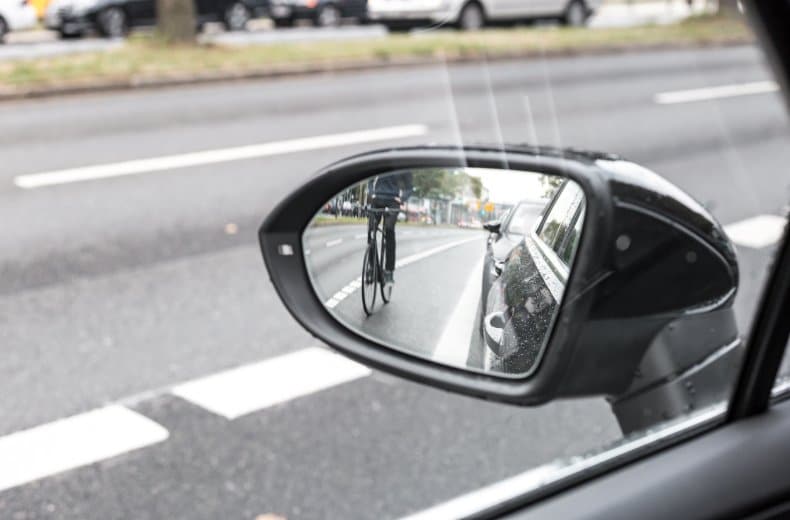
The ‘Dutch Reach’ is essentially a way of looking out for cyclists before you open your car door into their path.
The Department of Transport have even flagged the manoeuvre to be included in the Highway Code.
When you park your car at the side of the road, use your hand furthest from the door to pull the handle. The movement forces you to twist your body, turning your head and eyes in the direction of your blind spot, so you can look out for cyclists over your shoulder before opening a door and potentially causing an accident.
You should make the Dutch Reach a habit and encourage your passengers to do the same to ensure cyclists’ safety.
Check your blind spots
The Highway Code is littered with references to your blind spot, so one more reminder on our list shouldn’t hurt – especially as checking yours could stop an accident.
Remember to look over your shoulder when merging with traffic, parallel parking, changing lanes and before every manoeuvre where other road users could be behind you. You can make roads even safer by being aware of other drivers’ blind spots and trying to stay out of them when possible.
Checking your blind spots could also prevent you from becoming the victim of insurance fraud. Con-artists sometimes use the ‘hide and crash’ technique, waiting out of sight and pulling in front of unsuspecting drivers before slamming on their brakes to cause an accident.
Check your rear-view mirror before braking hard
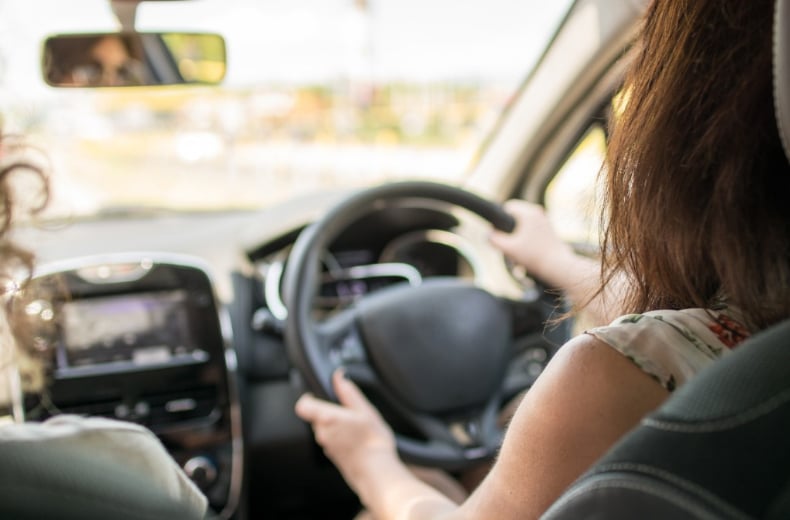
We all know that we should check our rear-view mirrors before breaking hard, but sometimes that’s easy to forget in the heat of the moment.
A quick glance in your mirror lets you gauge how hard you should break to prevent vehicles behind from crashing into the back of you.
Remember, you should check your rear-view mirror frequently and especially at times when you might expect to suddenly slow down – for example at a pedestrian crossing.

SALE – up to 40% off*
Roadside & Recovery from £5.29 a month*
• Cheaper than AA Price Promise or we’ll beat by 20%^
• We get to most breakdowns in 60 mins or less
• Our patrols fix 4/5 breakdowns on the spot

Check your left wing mirror before leaving roundabouts
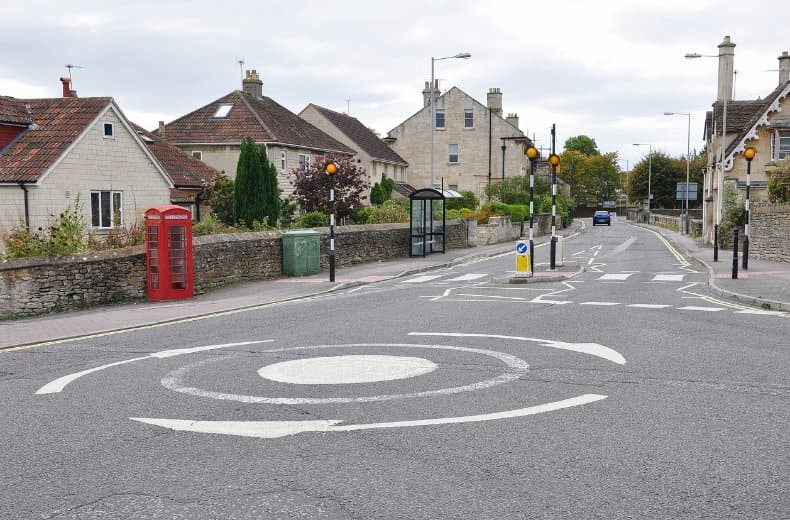
Roundabouts work on an incredibly simple premise; to give priority to traffic approaching from your right. However, there’s so much more to our favourite circle-shaped junctions.
Not only should you look out for traffic lights, road markings and use indicators appropriately, but it’s important to consider cyclists too. After you’ve checked for traffic from the right, remember to look for bicycles who may be travelling straight on when you turn left. Your wing mirrors are your best friend.
Check passenger seat belts
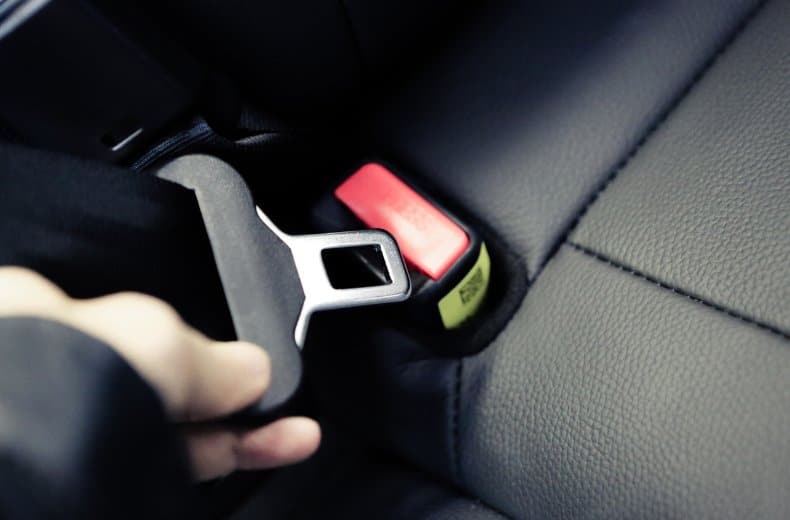
If you rarely have passengers in your car, it’s easy to forget to check your passengers’ seatbelts. A regular check could highlight the need to repair or replace belts before the issue becomes a problem.
Find a mechanic you can trust to complete the work using the RAC approved garage network.
Don’t let your passenger put their feet on the dash
Does it matter if your passenger wants to sit back and relax with their feet up on the dashboard? In short, yes. Letting passengers rest their feet anywhere other than the footwell could have some unfortunate consequences.
Airbags are designed to minimise the impact of a crash, so when they inflate at speed, they could send your passenger’s legs hurtling towards their body and face.
If you’re still having trouble convincing your passengers, it could be worth showing them the painful looking x-rays from accidents where people had their feet on the dashboard. They alone should persuade anyone.
Leave enough space between you and the driver ahead
We’ve all set off on a car journey later than we should have done, or been sat in traffic behind a motorist taking things a little slower than we hoped. Despite the frustration, it’s important in these situations not to drive close behind other vehicles.
The Highway Code says you should “leave enough space between you and the vehicle in front so that you can pull up safely if it suddenly slows down or stops. The safe rule is never to get closer than the overall stopping distance”.
It’s important to leave a two-second gap between you and the vehicle in front on fast moving roads and in tunnels. This should double to four seconds on wet roads and increase further when conditions are icy.

Check under your car for cats
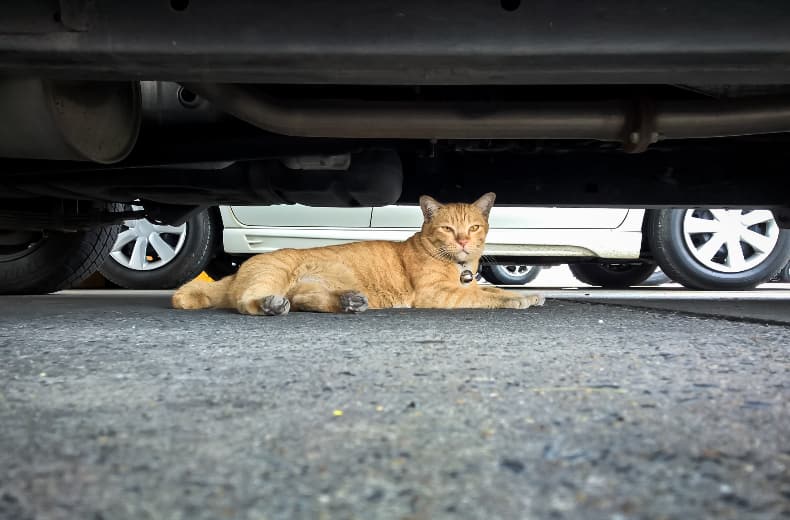
This one might not save the life of a human, but surely we’d all like to save the life of a cat too, especially when it takes such little effort.
Cats often find shelter under cars in wet and cold conditions. The smart animals will even seek out recently parked vehicles so they can bask in the heat of a warm engine.
Before you set off on your next journey, be sure to look under your car, on top of tyres and under wheel arches to avoid harming a cat by accident.
Use your hazard lights to help others
Rule 116 of the Highway Code says: “You MUST NOT use hazard warning lights while driving or being towed unless you are on a motorway or unrestricted dual carriageway and you need to warn drivers behind you of a hazard or obstruction ahead.”
If you notice that traffic has dramatically slowed down or there’s an accident up ahead on a motorway or unrestricted dual carriageway, you can warn other road users about potential dangers by temporarily putting your hazard lights on.
Brakes are often used lightly on fast moving roads, so it can be difficult to tell when we should apply them more heavily. This simple move could save lives.
You should only use hazard lights long enough to ensure your warning has been observed and remember, they can be particularly useful to other drivers on a bend or brow of a hill where visibility is reduced.
Let other drivers know that their headlights are off
With many newer cars, sensors detect low-light conditions and automatically switch on the headlights. However, for many cars on the road, old-fashioned human intervention is needed and sometimes we simply forget to turn our lights on.
If you see a car driving in low-light conditions with their headlights switched off, a simple ‘off then on’ of your own dipped lights can work as a useful reminder.
Try to avoid flashing your full beam lights as they can dazzle other drivers.
Be wary that your meaning isn't being misinterpreted by the other drivers around you as well. In normal driving conditions you should only flash your lights at other road users to make them aware of your presence, but it's common for this action to be interpreted as showing your intention to give way to another driver.
Just be careful that you don't send the wrong message - if you're unsure, don't risk it.
5 Star Defaqto rated cover
RAC Comprehensive Car Insurance Plus has been given a 5 Star Rating by Defaqto. Get a quote online today.


‘Think bike’ and consider motorcycle riders
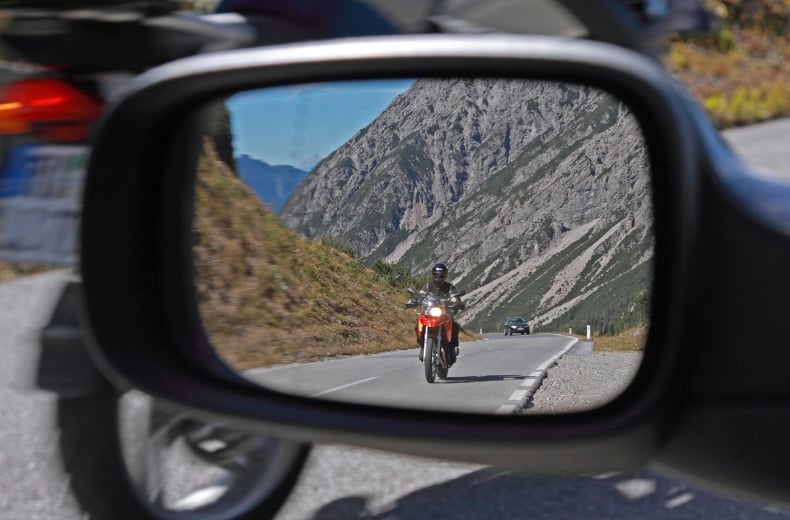
Per mile ridden, motorcyclists are roughly 52 times more likely to be killed in a road traffic accident than car occupants. It’s no surprise then, that the government and road safety groups ask drivers to spend more time at junctions looking out for them.
If you find yourself behind a motorcyclist, remember to give them extra room to navigate road conditions like potholes and unexpected debris that cars may be better equipped to deal with. When using your mirrors and checking your blind spots, make a deliberate effort to look for road users on two wheels and use the Dutch Reach when leaving your parked car.
Motorbikes sometimes 'split lane' which means they ride in between two lanes, especially in slower moving traffic. Be aware of this and take extra care when changing lanes.
Dry your shoes to prevent slipping on pedals
Rule 97 of the Highway Code says you should always ensure that “clothing and footwear do not prevent you using the controls in the correct manner”. Keeping the soles of your shoes dry will make sure you’re in control of pedals at all times.
Consider putting a mat in your footwell to soak up any liquids for a quick fix. Remember, your shoes should have a sole no thicker than 10mm and be narrow enough to avoid accidentally pressing two pedals at once.
Take regular eye tests
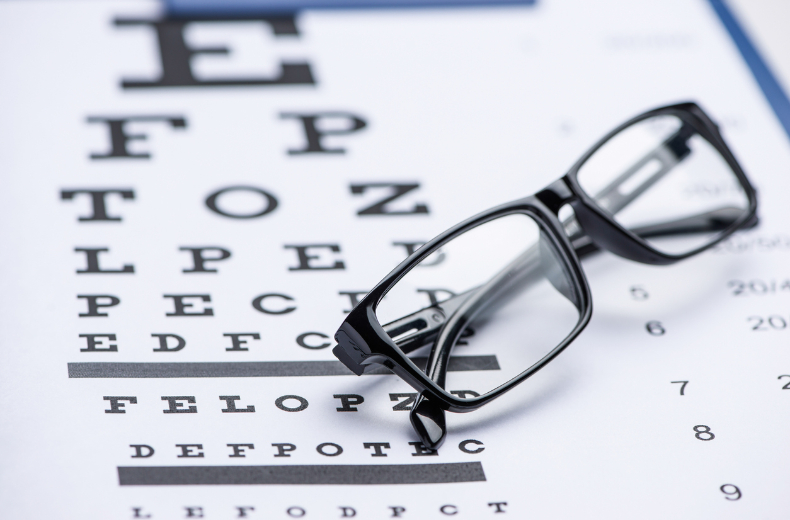
According to road safety charity Brake, crashes involving a driver with poor vision are estimated to cause 2,900 casualties and cost £33 million in the UK per year. Most worrying is that people can lose up to 40% of their clarity of vision without being aware of deterioration.
The NHS recommends that most people get their eyes tested once every two years and judging by the evidence, routine tests and appropriate eyewear could save a considerable number of accidents. Always pack a pair of glasses and sunglasses in your glovebox for a clear view of the road.
Use driving mode on your phone
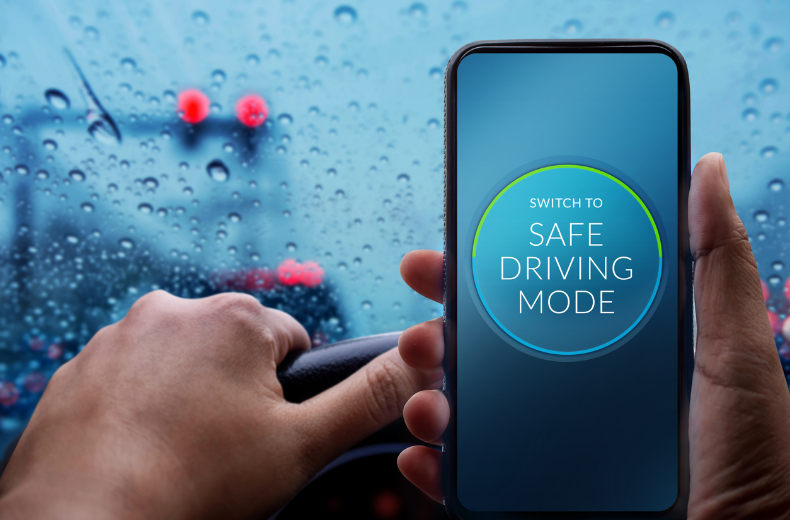
Statistics for 2017 show that drivers using mobile phones were responsible for 33 deaths on Britain’s roads. To reduce these fatalities, there are a few quick changes we can all make.
Most modern phones have a driving-mode that will divert calls and messages while you’re on the move. You should make sure this is turned on and any playlists you might want to listen to are set up before you set-off, to save becoming distracted at the wheel.
If your phone doesn’t have a driving mode and you’re not expecting a call, you could always go ‘off grid’ and turn it off completely.
Slow down and give lots of space to horses
Rules 214 and 215 of the Highway Code refer to passing animals and horse-riders. Although there is no set distance to drive around them, you should “always pass wide and slowly”.
Don’t sound your horn or accelerate away quickly once you pass horses, as this can startle the animals – and as the Highway Code reminds us, riders are often children and much more vulnerable road users. Riders can even ask for motorists to slow down or stop, so look out for any and signals they might give.
Get 30 driving tips that will save you money
Running a car isn’t cheap, but there are some easy things you can do to keep your costs down. Get these tips and more useful driving articles sent straight to your inbox now.















